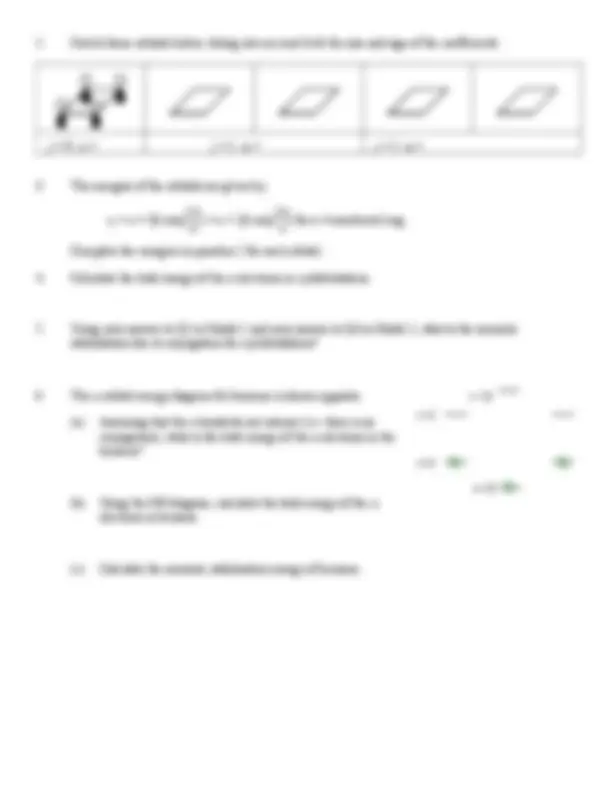



Study with the several resources on Docsity

Earn points by helping other students or get them with a premium plan


Prepare for your exams
Study with the several resources on Docsity

Earn points to download
Earn points by helping other students or get them with a premium plan
Community
Ask the community for help and clear up your study doubts
Discover the best universities in your country according to Docsity users
Free resources
Download our free guides on studying techniques, anxiety management strategies, and thesis advice from Docsity tutors
The mo diagrams and critical thinking questions for π orbitals in cyclobutadiene and benzene. Students are asked to calculate coefficients, sketch orbitals, and determine energies and aromatic stabilization energies. This material is useful for advanced chemistry students studying organic chemistry and molecular orbitals.
What you will learn
Typology: Lecture notes
1 / 2

This page cannot be seen from the preview
Don't miss anything!


The MO diagram for an isolated C=C π bond is shown opposite. Each electron in the bond has an energy of α + β.
The particle on a ring solution to the Schrodinger equation can be used to work out the π molecular orbitals for organic rings. Solving the equation gives two solutions:
θ